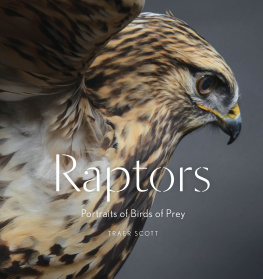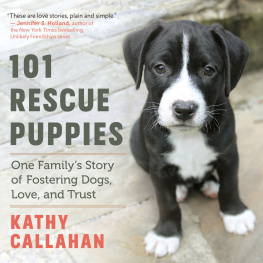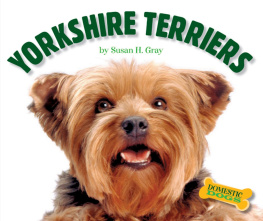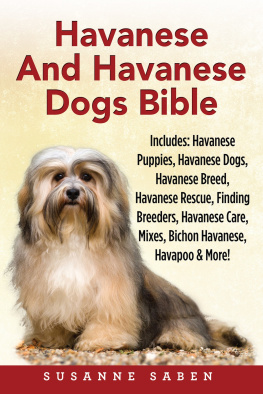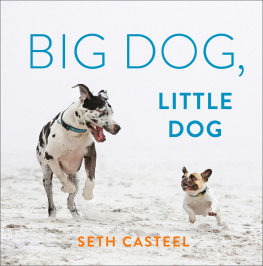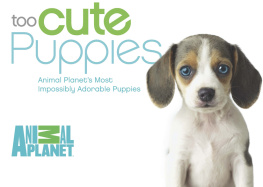Copyright 2013 by Traer Scott. All rights reserved.
No part of this book may be reproduced in any form
without written permission from the publisher.
ISBN 978-1-4521-2434-6
The Library of Congress has previously cataloged this title under ISBN 978-1-4521-1431-6
Designed by Marina Sauri
Chronicle Books LLC
680 Second Street
San Francisco, California 94107
www.chroniclebooks.com
NEWBORN PUPPIES
DOGS IN THEIR FIRST THREE WEEKS


For Agatha, my very own tiny miracle.
Introduction:
The Newborn Puppy
Traer Scott

I dont apologize for loving puppies. They are blissful little creatures whose downy fur, sweet breath, and soft sounds are irresistible. I want to nuzzle them, breathe them in, and find a way to fill myself with their little puppy essence. Somehow, though, puppy love has developed a bad rap. Perhaps too many cards and calendars featuring wiggly little furballs spilling out of baskets or gamboling after playful kittens have left us with the feeling that celebrating the wonder of puppies is best left to eight-year-old girls. I am here to challenge that notion with dozens of photos of the youngest dogs you have probably never seen.
In this book, you will find a great variety of breeds and mixes, all between the ages of one and twenty-one days old. Between breeds, dogs exhibit extensive physical variations. They are, in fact, the most physically diverse land mammal species on earth. Despite the enormous distinctions in appearance, size, and personality that reveal themselves later on, seeing puppies at this age, its no surprise that all dog breeds actually share 99.8 percent of the same DNA. In taking these photos, I often marveled at the overwhelming similarities that dogs share at this stage in life.
I chose twenty-one days as the cutoff for my subjects because I feel that it represents a crucial developmental turning point. After three weeks, puppies start to look and act more clearly like the dogs they will grow up to be. They also become very familiar to us, what we envision when someone says puppy. But these early days also show a stage of canine life that few get to witness, and represent a time of remarkable growth, fragility, and change. Like some other mammals, dogs are born completely blind and deaf, with only a strong sense of smell to guide them to mothers milk. Within twenty-one days, puppies go from being barely distinguishable as canines to walking, growling, playing, and even barking. Scientifically speaking, two crucial developmental periods are found within this time: the Neonatal Period, which spans from birth to thirteen days, and the Transitional Period falling between thirteen and twenty-one days.
When human babies are born, they are completely dependent on their parents for every single aspect of survival. For this reason, many pediatricians now refer to the first three months of human life as the fourth trimester, a delicate period of time following birth when a newborn baby slowly acclimates to life outside the womb as their brain and central nervous system mature. Likewise, during the Neonatal Period, puppies are little more than fetuses out of the womb. They cannot hear or see and their responses are purely reflexive. Puppies cannot control their own body temperature and therefore must rely on proximity to their mother or littermates to stay warm. Movement during the first thirteen days is limited to paddling or crawling back and forth and sometimes swinging their heads from side to side, which helps to further develop their muscles and nervous systems. A puppys weight will double in the first week of life.
The Transitional Period, spanning only one week, is characterized by rapid progress in a puppys physical and mental development. Their eyes and ears, formerly sealed, finally open, revealing the world outside the womb. Puppies see their mother and siblings for the first time as well as getting a first look at their human caretakers. During days fourteen through twenty-one, puppies typically develop their first teeth, begin wagging their tales, barking, growling, and even start initiating play with littermates. By the end of the Transitional Period, puppies have normally taken their first steps and are often able to venture out of the whelping box.
Although these developmental periods are applicable to all dog breeds, the specific rate at which puppies mature varies from breed to breed and litter to litter. For example, the Italian Spinone litter that I photographed at twenty-one days old had just taken their first steps the day before my arrival. The puppies were large, awkward, and still very inept at movement or balance. In contrast, the Beagle/Pointer litter, twenty days old and quite a bit smaller, was extremely mobile and dexterous, having been walking for almost a week. Variations like this are one of the things that make this book not only fun but fascinating.
In making The Newborn Puppy , I worked only with shelters, families with oops litters, and hobby breeders who raise their puppies by hand in their homes. As I worked, the photos revealed themselves through the puppies behavior, body language, and response to outside stimuli. I never planned a pose or approach. It all happened organically, and I loved every minute of it. Some of my subjects are the offspring of champions while others are from the unwanted litters of strays. Whether show dog or mutt, pedigree or puzzling heritage, every one of these little puppies is equally exquisite and about to embark on the very great adventure of growing up.
It is no secret that I am smitten with dogs. I love to marvel at the difference between a Sighthound and a Shitzu, to witness the intense herding instinct of a Border Collie, the keen tracking ability of a Bloodhound, the lithe silhouette of an Afghan, or the webbed feet of the water-loving Lab. Of course these are not just charming traits, but useful and cultivated characteristics. Sometimes its easy to forget that dogs have been bred for millennia for a multitude of highly practical uses, usually the least of which is to curl up at our feet. The form and function of our dogs have been honed over centuries through selective breeding with a number of specific purposes in mind: herding, retrieving, guarding, hunting, and in the case of some toy breeds, pure companionship. Although most dogs in the western world no longer hold jobs, these physical adaptations and personality traits remain strong and distinguishable amongst purebreds.
Those deeply involved in rescue, who see the brutal realities of pet overpopulation on a day-to-day basis, often call for all breeding to cease until there are no more homeless animals. I used to feel the same way, but an end to breeding would actually mean the end of every breed variation we have and hold dear. If breeders stopped producing litters, all of these spectacular bloodlines and beautiful differences between dogs would not-so-slowly melt back into one big homogenous gene pool. Personally, I think this would be a devastating loss. If responsible breeders alone produced litters, we wouldnt have an overpopulation epidemic in this country. They are not the problem.
It is estimated that up to one-third of dogs in shelters are purebreds, but the overwhelming majority are mutts. Although I am accepting of responsible breeding, I will always choose adoption and encourage others to do the same. Despite my passionate (yet impractical) desire for an Irish Wolfhound, and the fact that every breed in existence has about a million dedicated breed rescues now, I will probably always have mutts. Why? Because mutts are often more in need of homes, but theyre also smart and strong and spirited. Another reason to love mutts: you generally get the best of several worlds, so to speak. My Pit mix, Audrey, raised from a five-week-old puppy, has the traits of many breeds in her muddled bloodline and is a water-loving, Frisbee-catching nanny dog with fierce intelligence.
Next page

